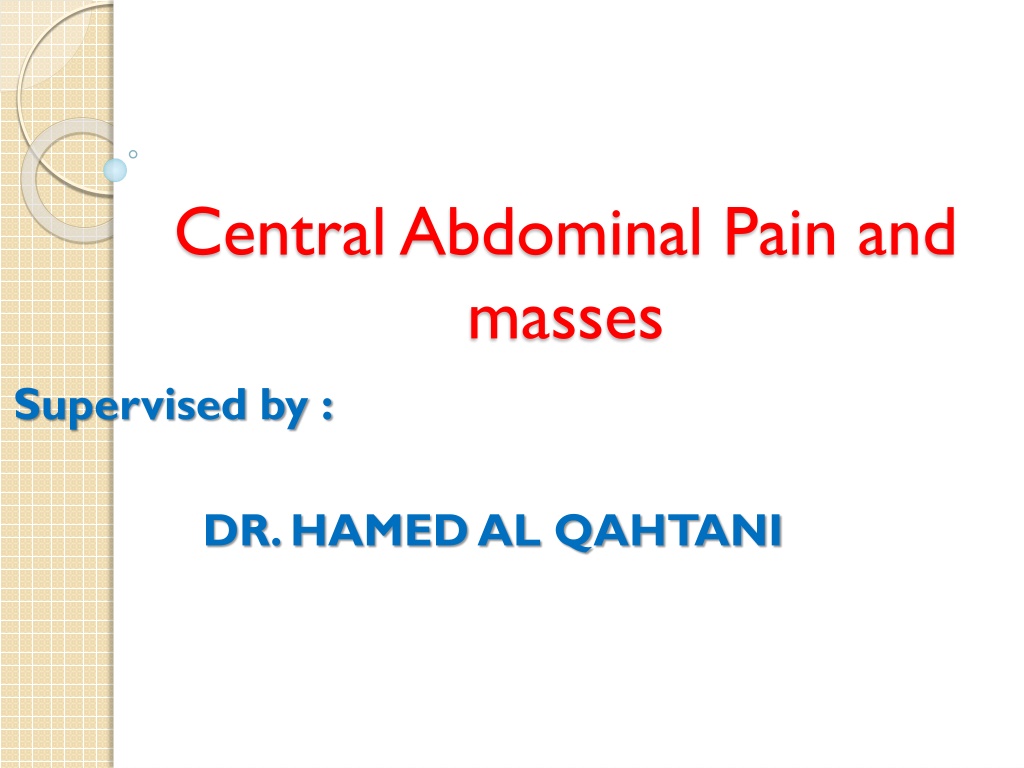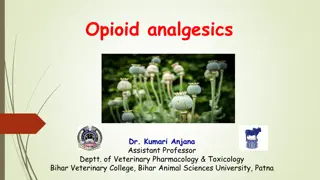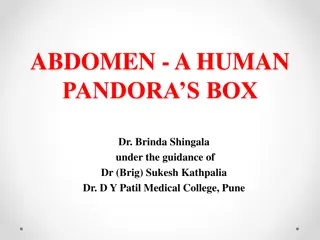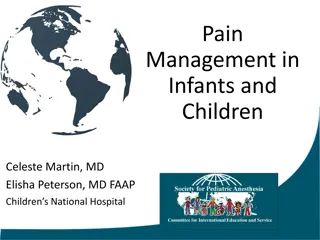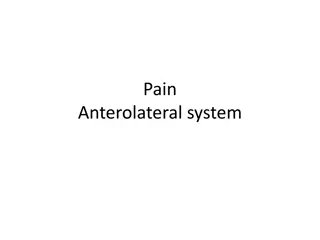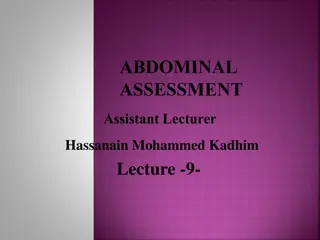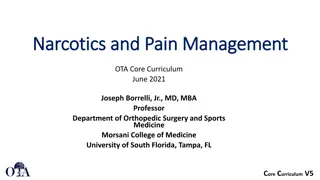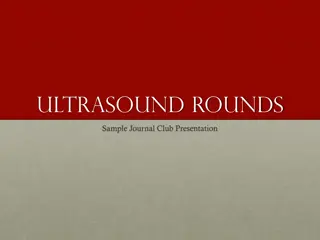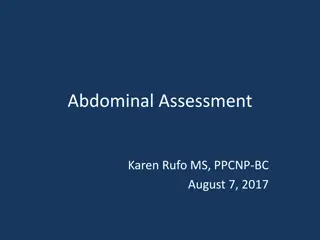Understanding Central Abdominal Pain and Masses in Clinical Practice
Abdominal pain evaluation involves considering various differential diagnoses such as appendicitis, small bowel obstruction, and mesenteric ischemia. By categorizing pain as visceral, parietal, referred, or radiating, healthcare providers can better understand the underlying pathology. The history of pain, its location, and characteristics provide valuable clues for diagnosis and management. This comprehensive guide supervised by Dr. Hamed Al Qahtani sheds light on approaching patients with central abdominal pain and masses, emphasizing the importance of differential diagnosis and prompt intervention when necessary.
Download Presentation

Please find below an Image/Link to download the presentation.
The content on the website is provided AS IS for your information and personal use only. It may not be sold, licensed, or shared on other websites without obtaining consent from the author. Download presentation by click this link. If you encounter any issues during the download, it is possible that the publisher has removed the file from their server.
E N D
Presentation Transcript
Central Abdominal Pain and masses Supervised by : DR. HAMED AL QAHTANI
Objectives Approach a patient with central abdominal pain and mass Differential diagnosis of central abdominal pain and mass Appendicitis Small Bowel Obstruction Mesenteric Ischemia
Abdominal pain is frequently a benign complaint, but it can also indicate serious acute pathology. It is very commonly due to Irritable bowel syndrome, however, other possible pathologies should be taken in consideration.
The history is the most important clue to the source of abdominal pain. Starting from the outer surface to the inner surface of the abdomen, the pain could be : cutaneous, musculoskeletal, vascular, neurological or organic.
Central Abdominal Pain Referred to midgut structures , which begin from second part of duodenum to splenic flexure
Generally, abdominal pain can be categorized by its underlying mechanism: -Visceral -Parietal -Referred - Radiating
Visceral pain is usually dull and aching in character, although it can be colicky, poorly localized. It arises from distention or spasm of a hollow organ such as the discomfort experienced early in intestinal obstruction or cholecystitis. Parietal pain is sharp and very well localized. It arises from peritoneal irritation such as the pain of acute appendicitis with spread of inflammation to the parietal peritoneum.
Referred pain is aching and perceived to be near the surface of the body. Radiating pain: is at site of pathology and other site
What are the possible DDx of central abdominal pain?
History Age, gender. Pain analysis: location, radiation, nature of the pain, duration, onset, mode, aggrevating and relieving factors, associated symptoms. Associated syptoms: nausea, vomitting, dyspepsia, constipation, diarrhea, change in stool color, change in urine color, abdomenal distention, fever, loss of weight, loss of appetite.
Cont. History Past history: - Medical: Diabetes, hypertention, hyperlipidemia, history of previous similar complaint, co-existing medical diseases. - Surgical: abdomenal procedures. - Drugs: eg. steriods, PPI s, paracetamol. -Allergies.
Cont. History Social history: Alcohol, diet and socioeconomical status, pain in relation to psychological factros and stress. Family history. Systemic review.
Examination General: - Appearance: jaundice, pallor, body mass, hydration, bruises, respiratory or cardiac distress, patient looking in pain discomfort, IV fluids. -Vital signs.
Cont. Examination Abdomen: - Inspection: abdominal distention, symmetry, visible pulsations, hernia, scars. - Palpation: superficial (rigidity, rebound tenderness, masses). Deep (Murphy s sign, masses, organomegaly) - Percussion: tenderness, dullness/ tympany. -Auscultation: bruit, bowels sounds. - PR examination.
Investigation Labs: - CBC - Serum U&E - LFT -Amylase - Lipase - Blood glucose level
Cont. Investigation Imaging: -Abdominal Xray (air-fluid levels, distended bowel, stones). - X-ray with contrast (follow-through). - CT with contrast.
Interventional investigations: - Endoscopy. - Laproscopy
Causes of Central abdominal pain: Gastroenteritis. Peptic Ulcer Disease. Pancreatitis. Appendicitis. Abdomenal Aortic Aneurism. Mesenteric Ischemia. Small Bowel Obstruction. Intussusception.
Definition Interruption of the passage of intestinal contents.
Small Bowel Obstruction Clinical features Colicky central abdominal pain Vomiting - early in high obstruction Abdominal distension - extent depends on level of obstruction Absolute constipation - late feature of small bowel obstruction Dehydration associated with tachycardia, hypotension and oliguria Features of peritonitis indicate strangulation or perforation
Small Bowel Obstruction Investigation Supine abdominal X-ray shows dilated small bowel May be normal Valvulae coniventes differentiate small from large intestine Erect abdominal film is very important to show the presence of air fluid level to differentiate if there is true obstruction or adynamic ileus Contrast studies(water soluble gastograffin not barium) & CT. are very helpful
Small Bowel Obstruction Pathophysiology Hypercontractility--hypocontractility Massive third space losses oliguria, hypotension, hemoconcentration Electrolyte depletion bowel distension--increased intraluminal pressure--impedement in venous return-- arterial insufficiency
Site? Small Bowel vs. Large Bowel Scenario prior operations(SBO), in bowel habits(LBO) Clinical picture scars, masses/ hernias(SBO), amount of distension(more distension more distal the obstruction usually )/ vomiting(more w/ SBO) Radiological studies gas in colon(LBO), mass(according to its site) (Almost) always operate on LBO, often treat SBO non-operatively
Etiology? Outside the wall Inside the wall Inside the lumen
Lesions Extrinsic to Intestinal Wall Adhesions (most common cause )(usually postoperative) Hernia (2ndmost common) External (e.g., inguinal, femoral, umbilical, or ventral hernias) Internal (e.g., congenital defects such as paraduodenal, and diaphragmatic hernias or postoperative secondary to mesenteric defects) Neoplastic Carcinomatosis, extraintestinal neoplasm Intra-abdominal abscess/ diverticulitis Volvulus (small bowel )
Lesions Intrinsic to Intestinal Wall Congenital Malrotation Duplications/cysts Traumatic Hematoma Ischemic stricture Infections Tuberculosis Actinomycosis Diverticulitis Neoplastic Primary neoplasms Metastatic neoplasms Inflammatory Crohn's disease Miscellaneous Intussusception Endometriosis Radiation enteropathy/stricture
Intraluminal Lesions Gallstone Enterolith Foreign body
Is there strangulation? 4 Cardinal Signs: fever tachycardia localized abdominal tenderness leukocytosis
Management of SBO (Principles) Admission NPO Fluid resuscitation Electrolyte, acid-base correction Close monitoring Foley +/- central line NGT decompression ? Surgery
Resuscitation Massive third space losses as fluid and electrolytes accumulate in bowel wall and lumen Depend on site and duration proximal- vomiting early, with dehydration, hypochloremia, alkalosis distal- more distension, vomiting late, dehydration profound, fewer electrolyte abnormalities Requirements = deficit + maintenance + ongoing loses
TO OPERATE OR NOT TO OPERATE The rule in SBO is to manage the pt conservatively w/ observation & give the pt time up to 48 hrs then reevaluate if still obstructed.
Indications for surgery Peritoneal findings. Rapidly progressing abdominal pain or distension. Visceral perforation..(evident by increase amylase level) Irreducible hernia Development of: - Fever. - Diminished urine output. - Metabolic acidosis.
Paralytic ileus Functional obstruction most commonly seen after abdominal surgery, or w/ hypokalemia & sepsis Small bowel is distended throughout its length Absorption of fluid, electrolytes and nutrients is impaired.. Abdominal distension is often apparent Pain is often not a prominent feature Auscultation will reveal absence of bowel sounds Water soluble contrast study may be helpful to differentiate if in doubt is it mechanical or functional obstruction
Management : for ilius conservative (it resolve 2-3 days after surgery mechanical : 1-adhesive conservative wait for 48 h 2 - non-adhesive CT scan & imm surgery
Acute Mesenteric Ischemia Definition: It is defined as an occlusive or non-occlusive mechanism leading to hypoperfusion of one or more mesenteric vessels.
Acute Mesenteric Ischemia Incidence: relatively rare. More in older population Survival & Mortality: Survival is v. bad, although there has been a reduction in mortality but it remained around 60-70% since then.. Mortality is high because usually the diagnosis is made after infarction, damage proceeds even after revascularization, and concomitant medical problems affect long-term outcomes There is significant morbidity associated with acute mesenteric ischemia and up to 30% of patients become TPN dependent. Recurrence of disease is common
Mesenteric Ischemia CAUSES: 1. Arterial embolic disease 2. Arterial thrombotic disease 3. Low flow status.non-occlusive disease. 4. Venous thrombotic disease 5. Atherosclerosis. (chronic)
Mesenteric arterial embolism The classic presentation is severe abdominal pain that is out of proportion to minimal or absent physical signs Most common cause of acute mesenteric ischemia Embolic sources: 80% cardiac. Others.. in SMA: Jejunal & ileal branches of SMA are affected more cuz they r end arteries (no anastomosis ) History: 1.Sudden and severe epigastric or mid-abdominal pain 2. Vomiting and explosive diarrhea 3. 25% of patients have had previous embolic events
Mesenteric arterial embolism Examination findings: Cardiac The abdominal examination: - may be normal initially with signs of acute abdomen later - Slight to moderate abdominal distension is common - Bowel sounds are highly variable - Peritoneal signs or blood in the stools are late ominous signs implying infarction
Mesenteric arterial embolism Investigations: The diagnosis usually depends on clinical suspicion Initially the standard hematological and biochemical studies are unrewarding.. Plain AXR CT Scan(It is the most imp & the Ix of choice here) Occasionally US Angiography: Embolic lodging in thr SMA is often just past the inferior pancreaticoduodenal and middle colic arteries thus isolting the small bowel from its major collateral circulation
Plain AXR The purpose of doing it is mainly to exclude other pathologies that could present in the same way. Shown here is the thumb print sign which is a late sign that indicates infarction of the bowel
CT Scan SMA embolus Bowel wall thickening
Principles of Treatment 1.Diagnose 2. Restore Flow (surgical embolectomy) 3. Resect non-viable tissue 4. Supportive Care 5.Reevaluation( second look operation)
Acute Arterial Mesenteric Thrombosis A less common cause Follows thrombosis of an underlying diseased SMA (Found at ostium of SMA) Cause: Thrombosis on top of an ruptured atheromatous plaque w/ exposed intima
Mesenteric venous thrombosis Clinically: The presentation is of an acute abdominal catastrophe less abrupt than seen with the SMA embolus with eventual development of severe mid-abdominal pain These symptoms may occur de novo or be superimposed on a background of chronic intestinal ischemia
